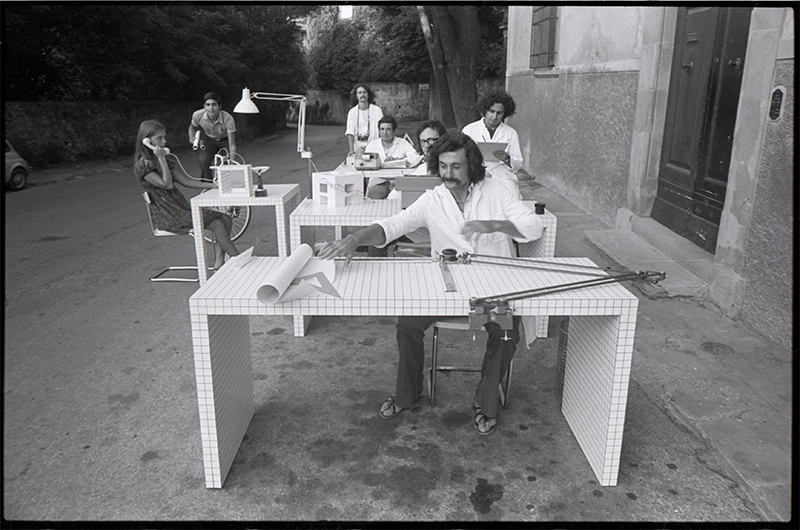
Superstudio
“If design is more of an incentive to consume, then we must reject design”
Founded in 1966 by Adolfo Natalini and Cristiano Toraldo di Francia, Superstudio is a group of architects who proposed to radically rethink architecture and design through a universe of foreign objects and dystopian visions. The group disbanded in the early 1980s.
The group produced furniture elements but above all was noted for its publication of photomontages featuring fictional buildings.
Their project "Monument Continu" questions: a beneficial utopia or an evil dystopia, which underlined the importance of man and his future in his environment. They explored recurring themes such as the relationship to individual and collective life, to science and technology, as well as to the existing urban and natural environment. Their images have more value as food for thought than as a desire for immediate application, but prefigure current questions such as the globalization of networks and virtual communications, migratory flows, demographic variations and urban expansions.
Superstudio made the architect face his responsibilities by asking him to reevaluate his role in the nightmare he helped to design.
Superstudio's "Continuous Monument" photomontage features an infinitely repeated white grid, reminiscent of modern taste and can be interpreted in different ways: as a megastructure colonizing the world, a critique of the standardized architecture of the 1960s, or a support for new forms of production and appropriation.
The ambiguity of the infinite repetition of the grid, abstract and neutral white frame, between beneficence and evil, crystallizes fears that are still relevant today. The opposition between the grid and man calls into question human becoming in the face of this neutral and mystical environment. The megastructure physically and culturally connects people, but at the risk of losing local cultures.
Superstudio became one of the most influential bands in Florence and synonymous with the Italian Radical Design movement, which grew out of the counterculture movement.
Superstudio's anti-architectural proposals used monochrome grid systems as a means of mediation and equality of space. It was also frequently used in their furniture design in the form of small white glazed tiles.
Their work focused on the use of space and how architecture can be a catalyst for social change.
Voir plus


















